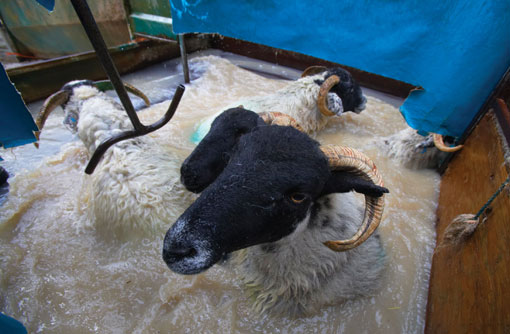Get diagnosis right for sheep scab

Farmers with sheep suspected of suffering from scab or lice are urged to be diligent in their diagnosis.
Physical symptoms of lice and scab can be similar, but vets say the specific treatments required for both problems means a correct diagnosis is critical.
And while some sheep infested with lice are constantly scratching, those suffering from sheep scab may not show any outward signs of skin discomfort even though they are highly infectious.
Incorrect diagnosis by farmers of the two conditions is widespread, according to vets. And they can be so difficult to tell apart that a piece of wool or even a newly sheared fleece from an itchy ewe isn’t enough to identify the problem.
“The only way to be sure is to examine the ewes,” says vet Colin Lindsay of Capontree Veterinary Centre, Brampton, Carlisle.
“If necessary, take a few in a trailer to the surgery. Better to be sure than waste money on the wrong treatment and not even tackle the problem.”
Treatment
While a pour-on will kill lice, farmers need to make sure what type of lice they are dealing with. “There are biting lice and sucking lice and some products will kill one but not the other.
“If a pour-on is used and the condition appears to be suppressed, farmers often believe the itchiness was only a lice infestation.
“We’ve had flocks treated to kill lice only to find the condition re-appears. The sheep are then treated again and often a third time before the vet is called in and confirms the problem had always been sheep scab that hadn’t been correctly diagnosed,” says Mr Lindsay.
Scab
Even when a farmer is convinced he has sheep scab, the entire flock must be treated within a short period of time, says Mr Lindsay. But correct dosing rates must be adhered to. Some products have dose rates for treatment and dose rates for control. Unless the higher dose rate for treatment is used the scab won’t be killed.
And farmers need to remember sheep that are actually itching are the ones that are allergic to the scab mite dung that is laid under the skin – but far more sheep could be infected and not show symptoms from skin discomfort, says Mr Lindsay.
“If only those that are itching are treated the disease will continue to spread through the flock.
“There has to be a whole-flock treatment within two or three days. And some sheep can suffer from both scab and lice infections – both of which can be easily spread at shearing time.”
Sheep scab can be confirmed by an obvious scabby appearance to the skin, while ewes infected with lice can seem to have relatively clean skin, but it should still be possible to see the lice.
“Get a professional diagnosis and use the right product for the job,” says Mr Lindsay. “When scab is suspected a deep skin scrape needs to be taken to confirm the infection. Anyone with ewes suffering from skin infections needs to get those sheep to a vet.
“We’re seeing scab routinely all year round, but shearing time often shows up infected sheep. Dipping sheep under licence will give an effective treatment against scab and lice, but if dipping isn’t an option it’s important to make sure you select the right treatment to sort out the problem by ensuring your diagnosis is correct.”
